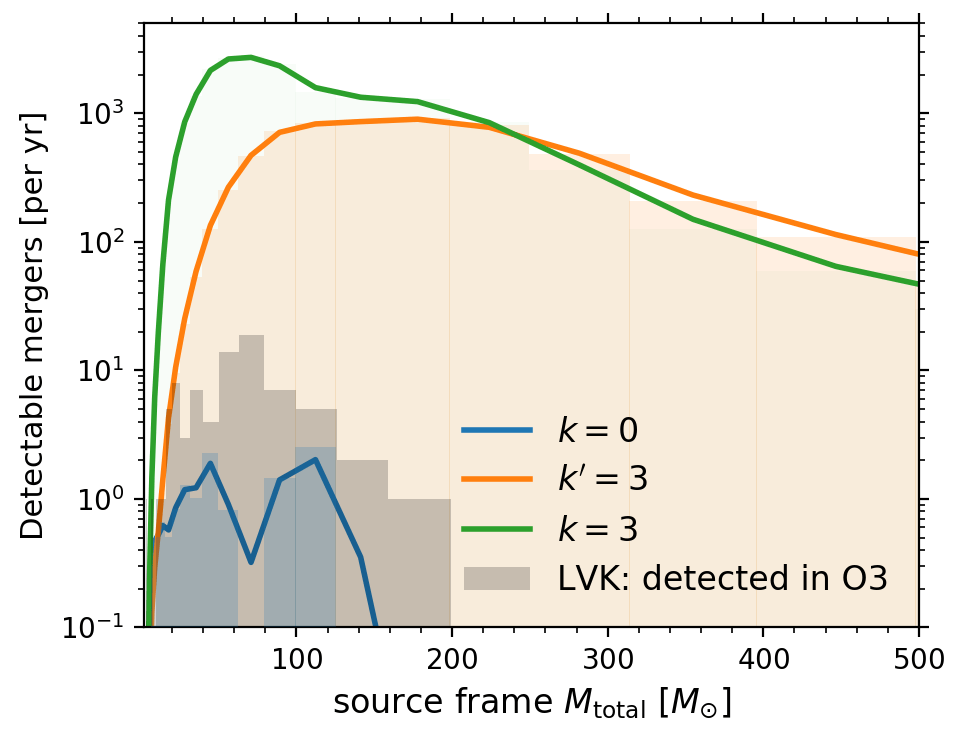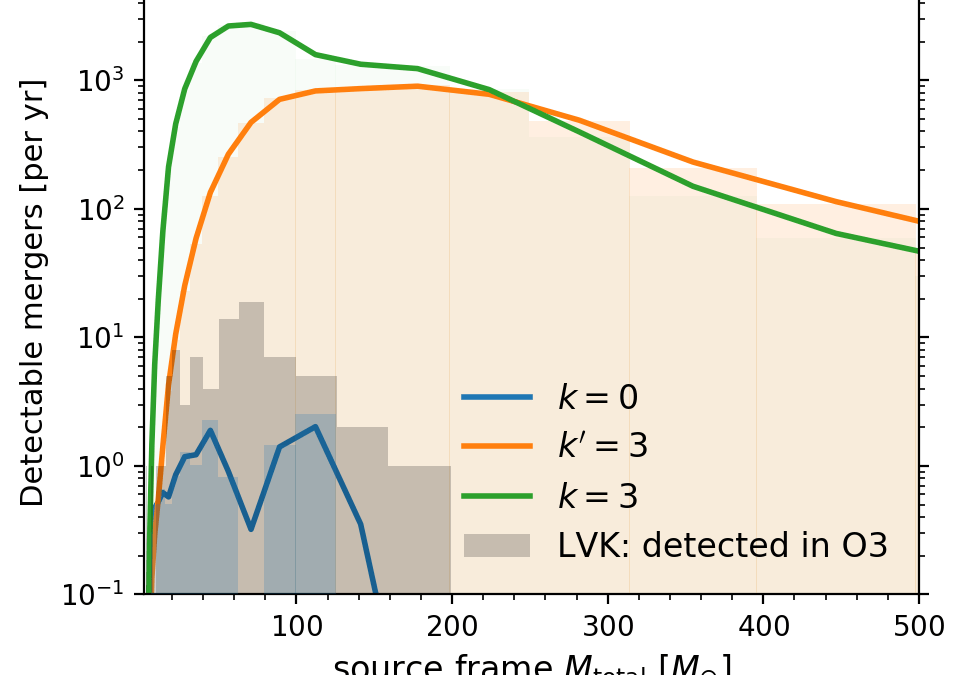A recent paper made the somewhat surprising claim that black holes in an expanding universe are “cosmologically coupled” — that is, their mass increases as the Universe expands, to the point that the density of a population of black holes would stay constant as the Universe grows. This scaling is the hallmark of “dark energy” so cosmologically coupled black holes could thus account for the accelerated expansion of the Universe. However, if black holes put on weight as the Universe gets bigger this should lead to a whole range of effects which can be used to test this idea. In particular, gravitational waves from merging pairs of black holes are regularly seen by the LIGO, Virgo and KAGRA [LVK] detectors. Everything else being equal, more massive black holes merge more quickly – so the hypothetical cosmological coupling would increase the number of mergers seen in the LVK detectors relative to the standard scenario.
BPASS, a simulation tool developed by Jan Eldridge and Elizabeth Stanway estimates the expected populations of binary stars in the Universe. The heaviest of these stars will turn into black holes at the end of lives so BPASS can estimate the starting population of binaries. Consequently, Eldridge, Richard Easther and Auckland PhD students Sohan Ghodla and Max Briel could calculate the expected number of black hole mergers seen by LVK if the cosmological coupling was real and compare that to the LVK data. The resulting paper, led by Ghodla, was published in the Open Journal of Astrophysics.
It turns out that adding the cosmological coupling makes the merger rate around 1,000 times bigger, and far larger than the number of actual detections. Not only that, the typical masses of merging black holes would be much higher than their birth mass in this scenario. This further widens the gap with observations since these black holes would be much larger than the ones that are seen in LVK. The upshot is that it doesn’t look good for the cosmological coupling hypothesis, which was, in fairness, always viewed as an unlikely claim by most members of the community.
On the other side of the coin, this calculation also illustrates how gravitational wave detectors create new mechanisms for testing physical theories and understanding the properties of black holes.

The expected merger rate for cosmologically coupled black holes relative to the observed merger rate at gravitational wave observatories.
On a more technical note, we can model the impact of cosmological coupling in two different ways. The first is to assume that their orbits only shrink as they radiate gravitational waves, but this rate is enhanced as their masses grow. The second is to make the additional constrain that the angular momentum of the isolated black hole binary is fixed as the masses grow, which also reduces the size of the orbit and further shortens their lifetimes. The k’=3 and k=3 lines reflect these two different choices for implementing the cosmological coupling. In addition, the predicted merger rate for regular black holes starting from the BPASS population is actually somewhat smaller than that derived from LVK observations but the difference is swamped by the increase from the cosmological coupling.
Relevant Papers
- Observational implications of cosmologically coupled black holes, Sohan Ghodla, Richard Easther, M.M. Briel and J.J. Eldridge Open J.Astrophys. (2023) • e-Print: 2306.08199 [astro-ph.CO]
